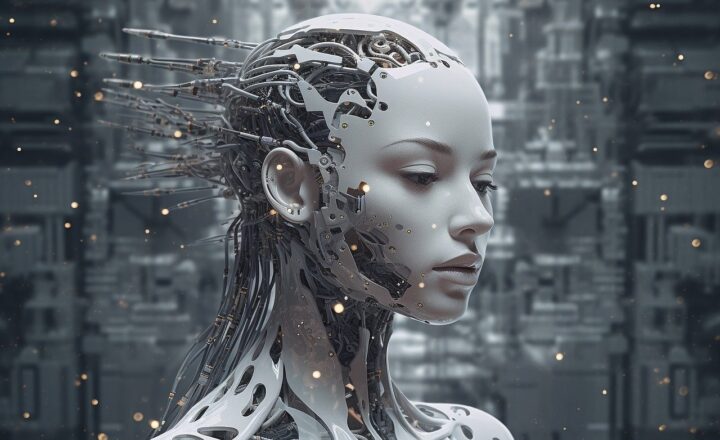Why AI-Generated Content Is Both Exciting and Controversial in Creative Industries
November 17, 2024

The rise of artificial intelligence (AI) has revolutionized countless industries, but perhaps no sector is as profoundly impacted as the creative domains such as writing, music, and visual arts. With the emergence of AI-generated content, creatives find themselves navigating an exciting yet controversial frontier. In this article, we delve deep into the implications of AI-generated content, exploring both its potential benefits and the serious questions it raises.
1. Understanding AI and Its Application in Creativity
AI, at its core, refers to systems that mimic human cognitive functions. In creative industries, AI can analyze vast amounts of data, learn patterns, and produce art, music, and literature based on those patterns. Neural networks, especially Generative Adversarial Networks (GANs), have become prominent tools in this surge of AI creativity.
AI can produce anything from catchy pop songs to deep, reflective poetry. Projects like OpenAI’s GPT-3 have stimulated compelling discussions about the nature of creativity and the role of the artist in the age of AI.
With the ability to create in milliseconds what might take a human days or weeks, AI ushers in not only exciting possibilities but also significant concerns. These concerns compel the creative community to redefine authorship, ownership, and originality.
2. The Excitement of AI-Generated Content
AI-generated content holds immense appeal for various reasons:
- Enhanced Productivity: Creatives can use AI tools to enhance their productivity. For example, AI can help bloggers generate topic ideas, outline articles, and even draft the initial versions of content, freeing humans to focus on refinement and strategizing.
- Inspiration and New Perspectives: AI’s unique approach to creativity can inspire human artists. By presenting unexpected ideas or styles, AI tools can push thinkers out of their comfort zones and help them explore uncharted creative territories.
- Cost Efficiency: For businesses looking to reduce costs and expedite content delivery, AI-generated content provides a scalable solution. Companies can produce marketing materials or social media posts at a lower expense, making content creation more accessible.
- Personalization at Scale: AI can analyze user data to create highly personalized content at scale, enhancing customer experience and engagement, which is crucial in today’s competition-focused landscapes.
These capacities of AI generate enthusiasm within industries, suggesting collaboration rather than competition between humans and machines.
3. The Controversies Surrounding AI-Generated Content
Despite its many advantages, AI-generated content is fraught with ethical dilemmas and serious controversies:
- Authenticity and Originality: If an AI generates artwork or a novel, who is the true author? Many argue that the lack of human experience and emotion behind AI-generated content makes it inauthentic.
- Copyright Issues: The way AI generates content based on learned data raises critical legal questions. If an AI produces a piece of content based on existing works, who owns the copyright? This gray area has significant implications for intellectual property.
- Job Displacement Concerns: As AI tools become more integrated into creative processes, there are growing fears of job losses. Creative roles once thought to be safe may find themselves at risk as AI continues to advance.
- Quality Control: While AI can produce content quickly, the quality may not always meet professional standards. Users face the risk of low-quality content flooding the market, undermining traditional standards of creativity and expertise.
These controversies reveal a rift between those embracing the future of AI in creativity and those pushing back in defense of human creativity.
4. Balancing AI and Human Creativity
The key question becomes: how can we leverage the power of AI while maintaining the integrity of human creativity? Here are some strategies that can pave the way to a balanced coexistence:
- Collaboration Models: Artists can collaborate with AI tools, using them as a source of inspiration rather than a replacement. By integrating AI at certain stages of the creative process, humans retain critical input while benefiting from AI’s efficiency.
- Ethical Guidelines and Standards: The establishment of ethical guidelines is essential for the responsible use of AI within creative industries. These guidelines should address authorship, copyright, and quality assurance, ensuring fair practices.
- Public Education on AI’s Role in Creativity: Educating the public and professionals about the capabilities and limitations of AI can help dispel myths and fear, fostering a more nuanced understanding of the technology’s role within creativity.
- Promoting Human-Centric Creativity: Emphasizing the unique qualities that human creators bring, such as emotional depth, experience, and cultural context, highlights that while AI can assist, it cannot replicate the full spectrum of human creativity.
By embracing collaboration, ethical practices, and education, we can begin to blend the advantages of AI with the irreplaceable essence of human creativity.
5. The Future of AI in the Creative Industry
The future landscape of creativity will likely see sophisticated AI tools becoming a staple rather than an outlier. As AI continues to evolve, these tools will become more intuitive, paving the way for even deeper collaboration between AI and creative professionals. Nevertheless, careful consideration and strategic actions are vital to ensuring that the innovations enhance, rather than eclipse, human creativity.
The discourse surrounding AI-generated content is not likely to conclude anytime soon. As we explore this exciting yet controversial field, the blend of technology and creativity will undeniably shape the industries and the way we create in fundamental ways.
Ultimately, the goal should be to embrace tools that enhance our creative expression—tools like AI should empower rather than replace the profound human experience at the core of creativity.
Conclusion
As AI-generated content becomes an undeniable part of the creative landscape, it presents both opportunities and challenges. By navigating this space thoughtfully, we can ensure that AI serves as a catalyst for human creativity rather than a crutch or replacement. The questions we grapple with today will shape the future of creativity for generations to come. Let’s embrace the potential of AI while safeguarding the quintessential human experience of creating art, music, and literature that resonate in ways only humans can understand.






